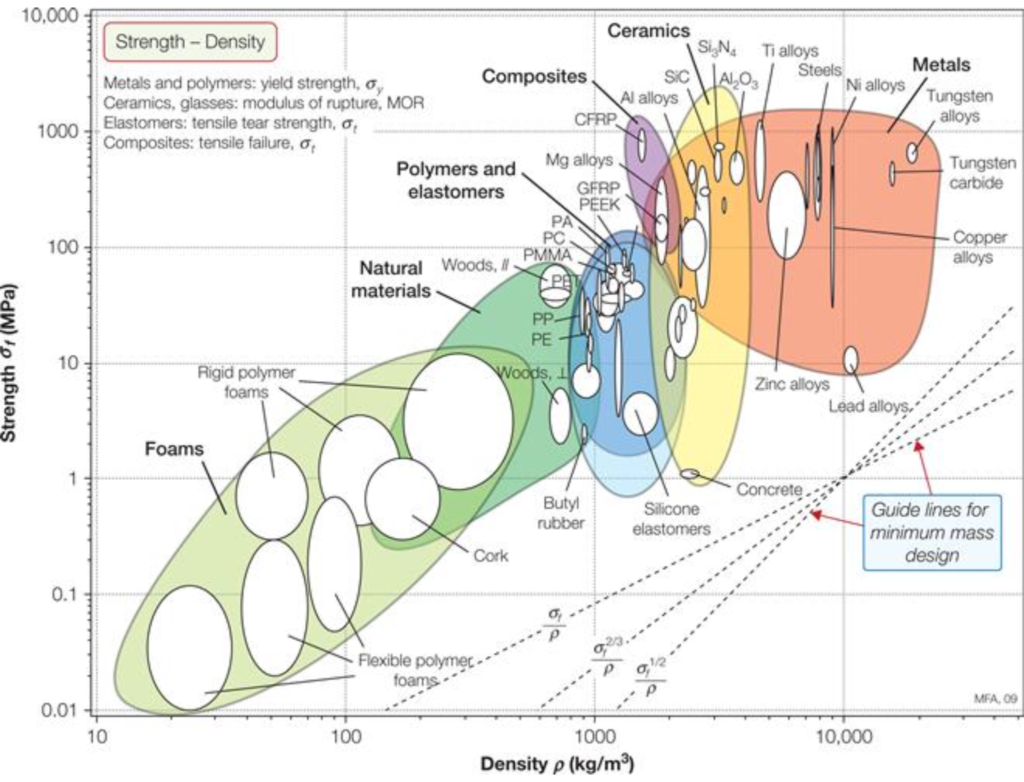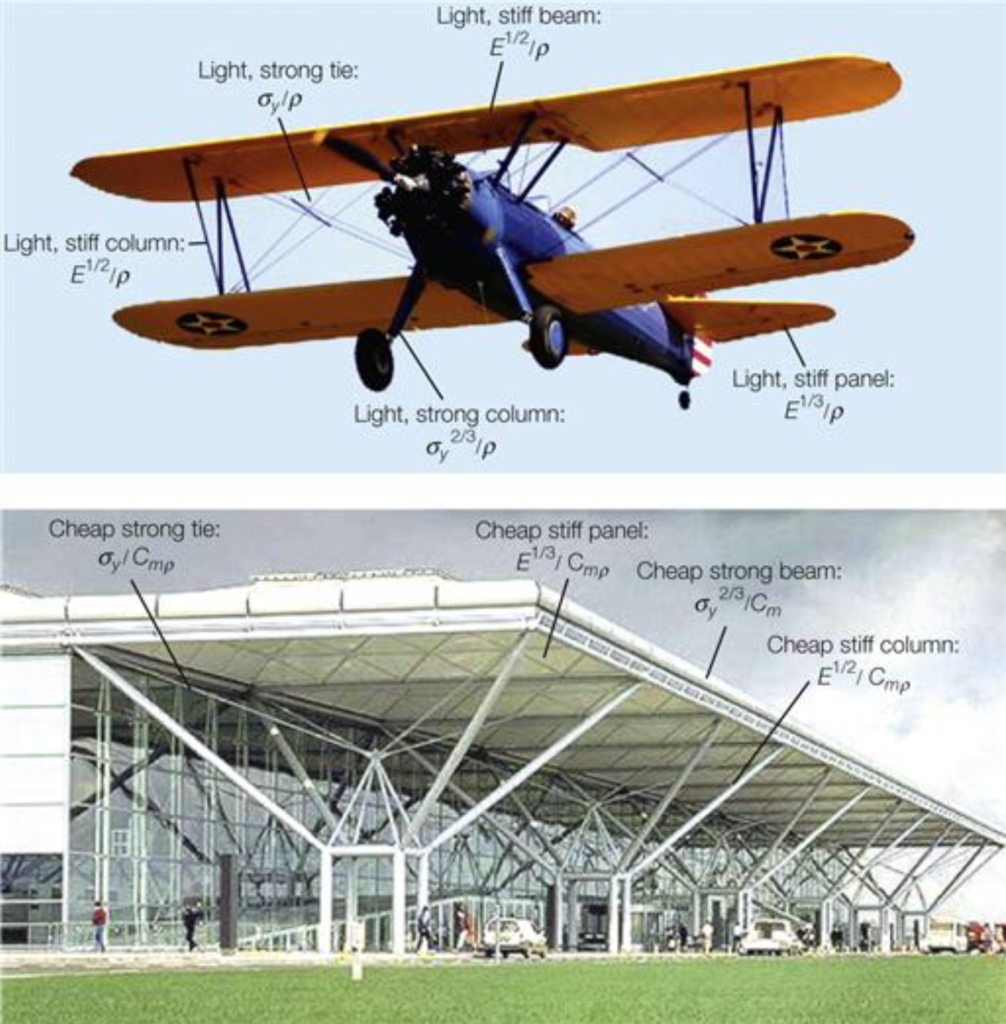 Material Selection in Mechanical Design, Fourth Edition, Michael F. Ashby. This book was introduced to me by a materials engineer I’ve been working with recently. It opened my mind on how to select materials based on different performance metrics.
Material Selection in Mechanical Design, Fourth Edition, Michael F. Ashby. This book was introduced to me by a materials engineer I’ve been working with recently. It opened my mind on how to select materials based on different performance metrics.
After introducing the concepts of material indices and presenting many families of property selection charts, worked examples are presented to aid the reader in implementing the ideas on their projects. The full spectrum of material properties are used in the examples including thermal conductance, cost, fracture toughness, as well as strength, modulus, and the other usual suspects.
The in-depth conversational explanations of all the parameters you have to take into consideration provides a thoughtful and precise way for an engineer to approach material selection while explaining why floor joists basically have to be made out of wood or steel I-beams. By turning decisions into properties-based material performance indices, the best choice becomes clear and numerically defendable against the usual force of personality arguments.
Below is an example of a strength-density chart of engineering materials with minimum mass design guide lines. I enjoy just staring at this chart and making observations such as how magnesium is solidly in the middle of the composites bubble, and how competitive wood parallel to the grain is.
When looking at more complicated built-up structures, the performance indices highlight the types of materials you should be using. Examples are given in the images below.
The hard copy is better than the kindle version because the graphics are sharper. This is also a book you want to be able to easily browse through. I own both a hard copy and the kindle version because I like having it with me all the time (on my tablet). I bought versions of this in India at a significant discount. Think about buying textbooks when you are in countries that have much lower prices (usually Asia).
This review is for the fourth edition, which I highly recommend. The fifth edition was released this past January, I imagine it’s better. Get it. Read it.
For an extensive preview of the content you will be getting in the book, you can read a collaboration between the author and NASA in TM 2012-217411, Material Selection for Aerospace Systems. It’s awesome, free, and should convince you to purchase the 660 page full version.
The University of Cambridge has also created an online resource that visualizes material data in the way presented in the book. It’s worth taking a look at.
http://www-materials.eng.cam.ac.uk/mpsite/
Interactive material charts are here:
-ejr


